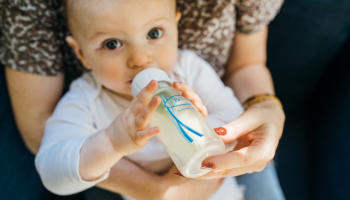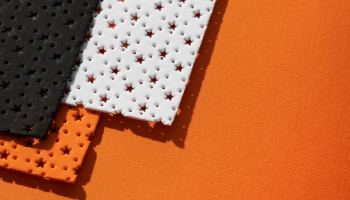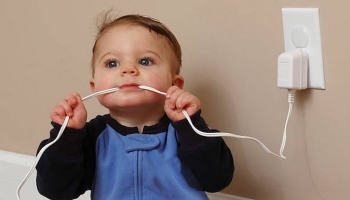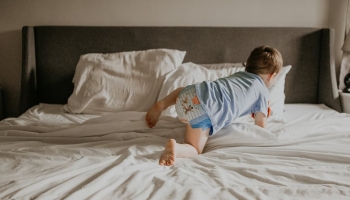
Parents of 14-month-old children often seek new, engaging activities to keep their little ones entertained and stimulated. Children are rapidly developing their motor skills, language abilities, and social awareness at this age. It’s important to provide activities that cater to these development areas while being safe and age-appropriate.
Understanding your 14-month-old child’s growth and development is crucial in selecting activities that will engage and challenge them. Children typically crawl, pull themselves up to stand at this age, and may even be taking their first steps. They are also starting to communicate through gestures, babbling, and a few recognizable words. Activities encouraging movement, language development, and social interaction are ideal for this age group.
Indoor and outdoor activities can both provide opportunities for learning and exploration. Indoor activities such as sensory play, music and movement, and simple puzzles can help boost creativity and problem-solving skills. Playing in the park, walking, or exploring nature can promote independence and physical development. With a bit of creativity and planning, parents can provide a variety of engaging activities to keep their 14-month-old entertained and stimulated.
Understanding Your 14-Month-Old’s Development
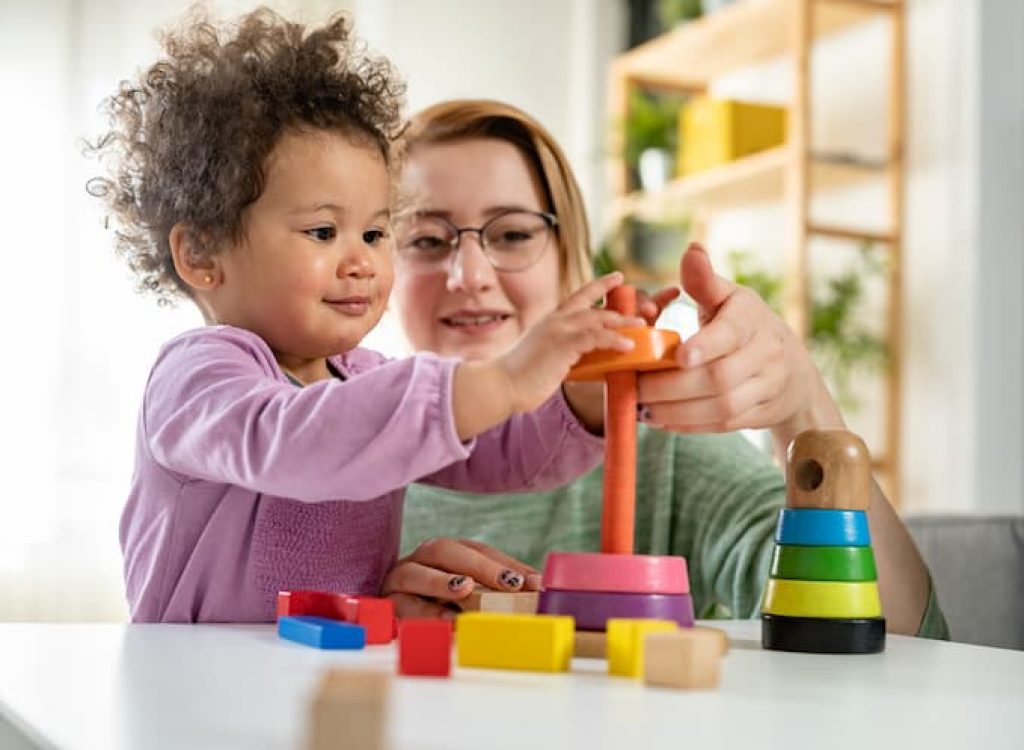
At 14 months old, your child is growing and developing rapidly. Understanding their developmental milestones can help you provide appropriate activities and support their growth. Here are some key areas of development to keep in mind.
Cognitive Development
Your 14-month-old is exploring the world around them and learning new things daily. They are becoming more curious and may spend more time examining objects and figuring out how they work. They may also begin to understand cause and effect, such as realizing that pushing a button makes a toy light up or make noise.
To support your child’s cognitive skills, provide plenty of opportunities for exploration and problem-solving. Offer toys with different textures, shapes, and colors, and encourage your child to play and experiment with them. You can also read books together and talk about the pictures and story.
Motor Skill Development
At 14 months old, your child is likely becoming more mobile and coordinated. They may be crawling, cruising, or even walking independently. They may also be able to pick up small objects with their fingers and use a spoon or fork to feed themselves.
To support your child’s motor skill development, provide plenty of opportunities for movement and exploration. Offer safe spaces for your child to crawl, walk, and climb, and encourage them to use their hands to explore objects and toys. You can also offer finger foods and utensils for your child to practice self-feeding.
Language Skill Development
Your 14-month-old is likely beginning to understand more words and may be able to say a few simple words themselves. They may also use gestures like pointing or waving to communicate their needs and wants.
To support your child’s language skill development, talk to them frequently and use simple, straightforward language. Label objects and actions, and encourage your child to imitate sounds and words. You can also read books, point out things and pictures, and sing songs and rhymes together.
Remember, every child develops at their own pace, and there is a wide range of “normal” development. Talk to their pediatrician for guidance and support if you have concerns about your child’s development.
Indoor Activities for a 14-Month-Old
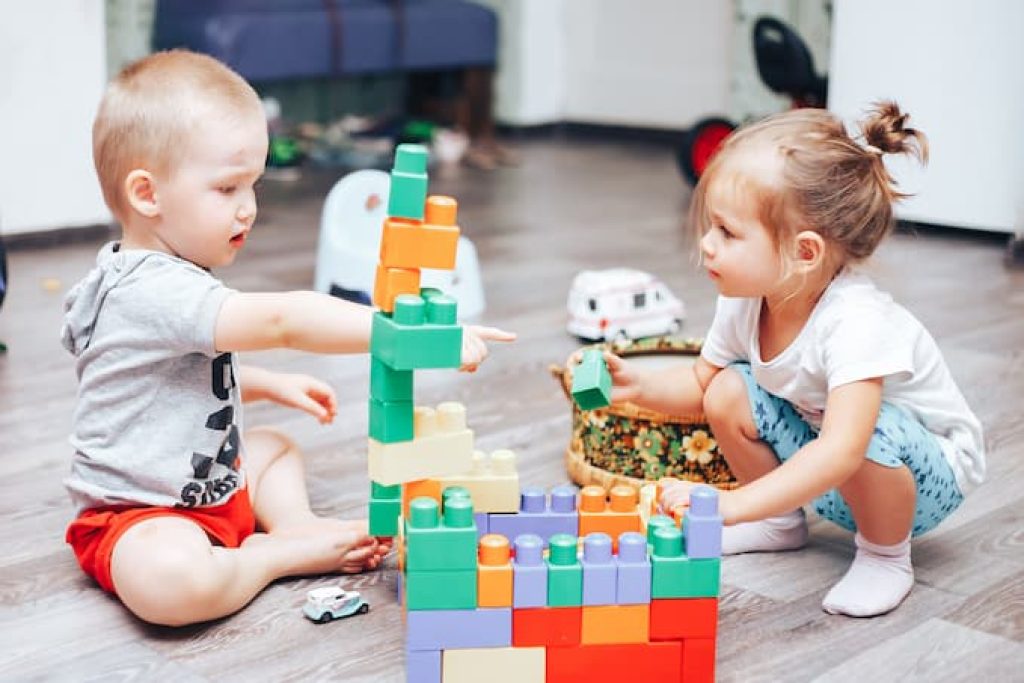
Plenty of indoor activities can keep a 14-month-old entertained and engaged when it’s too hot or rainy to play outside. These activities can help develop fine motor skills, problem-solving abilities, and hand-eye coordination. Here are some ideas for indoor activities for 14-month-olds:
Patty-Cake
How to play: Sit facing your toddler and clap your hands together rhythmically while singing the “Patty-Cake” rhyme. Encourage your toddler to imitate the clapping motion. You can also incorporate hand movements like rolling the dough, marking it with a “B,” and putting it in the oven.
Why it’s good: Patty-Cake is an interactive and engaging activity that promotes social bonding and coordination. It introduces rhythm and language through rhyming.
Benefits: Social interaction, hand-eye coordination, language development, rhythmic awareness.
Push-Pulling Toys and Games
How to play: Give your toddler push-and-pull toys like toy cars or a wagon. Please encourage them to push the toy forward and pull it back. You can create races or obstacle courses for added fun.
Why it’s good: Push-pulling toys help develop gross motor skills and teach cause-and-effect relationships.
Benefits: Gross motor skills, coordination, understanding of cause and effect.
Ripping Paper
How to play: Give your toddler a piece of paper and encourage them to rip it into pieces. You can make it more interesting by providing colored paper or old magazines.
Why it’s good: Ripping paper is a sensory and fine motor activity that allows toddlers to explore textures and develop hand strength.
Benefits: Fine motor skills, sensory exploration, creativity.
Chasing Bubbles
How to play: Blow bubbles and let your toddler chase and pop them. You can also provide them with a bubble wand for some interactive play.
Why it’s good: Chasing bubbles encourages physical activity and hand-eye coordination while providing sensory delight.
Benefits: Gross motor skills, hand-eye coordination, sensory play.
Squeezing Sponges
How to play: Give your toddler sponges and a small water container. Please encourage them to squeeze and release the water from the sponges.
Why it’s good: Squeezing sponges helps develop hand strength and control while introducing the concept of absorption and release.
Benefits: Fine motor skills, hand strength, understanding of basic science concepts.
Puzzles
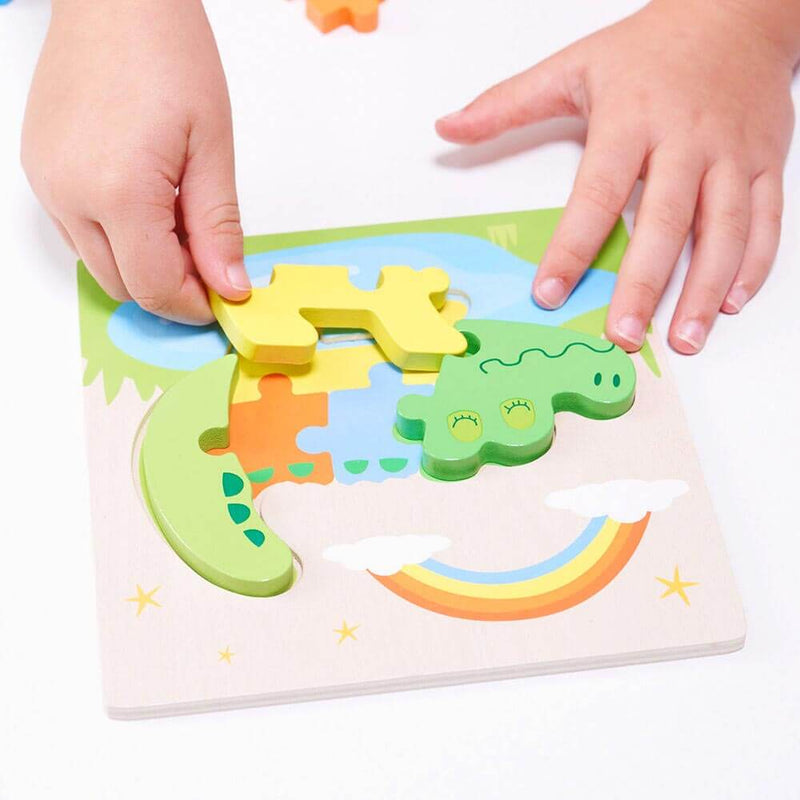
How to play: Offer age-appropriate puzzles with large, easy-to-grasp pieces. Sit with your toddler and guide them in placing the puzzle pieces in their correct spots.
Why it’s good: Puzzles enhance problem-solving skills, shape recognition, and hand-eye coordination.
Benefits: Problem-solving, fine motor skills, spatial awareness.
Collecting Things/Putting Things into Another
How to play: Provide objects like spoons, toys, or play food and containers like drawers or egg cartons. Encourage your toddler to put the things into the containers.
Why it’s good: This activity promotes organization, sorting, and fine motor skills.
Benefits: Fine motor skills, cognitive development, organization skills.
Paint with Water on Construction Paper
How to play: Give your toddler a brush and a cup of water. Let them “paint” on construction paper with a wet brush, revealing temporary colors.
Why it’s good: Mess-free and sensory, this activity introduces basic art concepts and encourages creativity.
Benefits: Sensory play, creativity, introduction to art.
Match Lids to Bottles
How to play: Collect various lids and corresponding bottles. Mix them up and have your toddler match the tops to the suitable bottles by shape or color.
Why it’s good: This activity enhances shape and color recognition, problem-solving, and fine motor skills
Benefits: Cognitive development, fine motor skills, shape and color recognition.
Mirror Play
How to play: Stand in front of a mirror with your toddler and make faces, gestures, or movements. Please encourage them to imitate your actions and take turns imitating theirs.
Why it’s good: Mirror play promotes self-awareness, imitation skills, and social interaction.
Benefits: Social development, imitation skills, self-recognition.
Laundry Basket Play
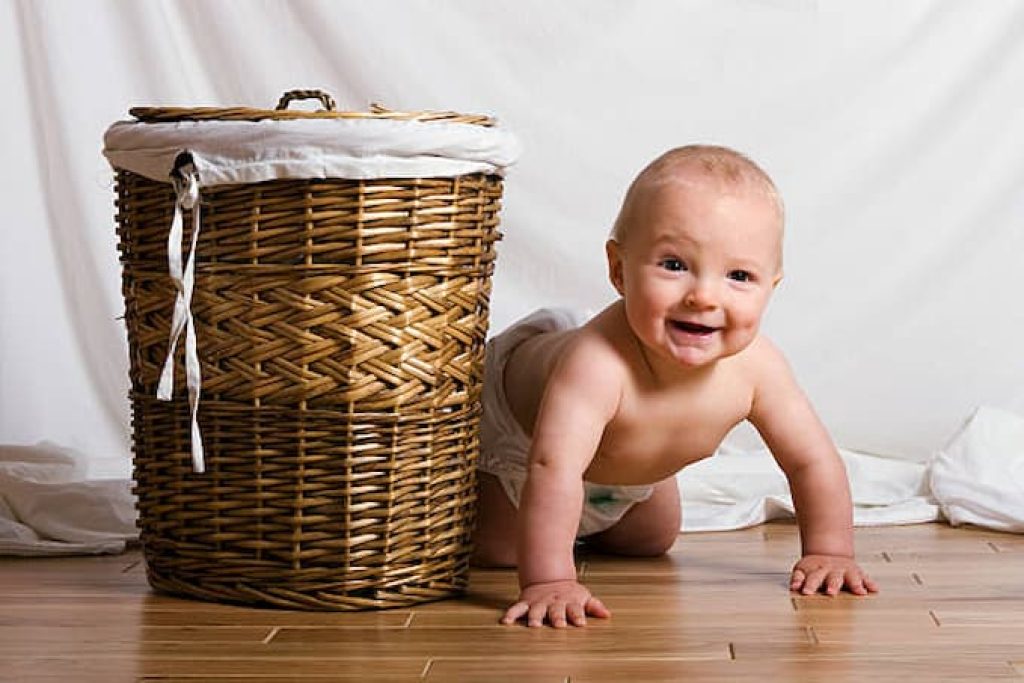
How to play: Place your toddler in a clean laundry basket and gently push them around, pretending it’s a car or a boat. You can also fill it with soft toys for imaginative play.
Why it’s good: Laundry basket play encourages imaginative and physical play within a confined space.
Benefits: Gross motor skills, imaginative play, spatial awareness.
Lift the Flap Books
How to play: Choose lift-the-flap books with colorful illustrations and hidden surprises beneath the flaps. Sit with your toddler, and as you read the story, encourage them to lift the flaps to discover what’s hidden underneath.
Why it’s good: Lift-the-flap books engage a child’s curiosity and promote interactive reading. They make storytime more exciting and encourage active participation.
Benefits: Enhances language development, fosters a love for reading, and stimulates fine motor skills.
Singing Songs
How to play: Sing a variety of songs to your 14-month-old. Include nursery rhymes, action songs, and simple tunes. Use hand movements or props for added fun.
Why it’s good: Singing songs is enjoyable to bond with your toddler, introduce them to new vocabulary, and encourage rhythm and language development.
Benefits: Promotes language skills, enhances memory, and provides opportunities for creative expression.
Ring Stacker
How to play: Offer a ring stacker toy with colorful rings of different sizes. Demonstrate how to stack the rounds on the base from largest to smallest and encourage your toddler to try it themselves.
Why it’s good: Ring stacker toys help toddlers develop hand-eye coordination, fine motor skills, and an understanding of size and sequencing.
Benefits: Enhances fine motor skills, encourages problem-solving, and fosters spatial awareness.
Pop-Up Toys
How to play: Provide pop-up toys with buttons or levers that make characters or objects pop up when pressed. Show your toddler how to manipulate these parts and watch the surprises.
Why it’s good: Pop-up toys captivate a child’s attention, promote cause-and-effect understanding, and provide sensory enjoyment.
Benefits: Develops hand-eye coordination, introduces basic engineering concepts, and offers sensory stimulation.
Sensory Play
How to play: Engage your 14-month-old in sensory activities like sensory bins filled with dried beans or cloud dough items. Let them explore different textures, such as construction paper or finger painting.
Why it’s good: Sensory play stimulates a child’s senses, encouraging exploration and discovery at a young age.
Benefits: Promotes fine motor skills, enhances sensory development, and provides a fun learning experience.
Building Blocks
How to play: Offer building blocks in various shapes and sizes. Encourage your toddler to stack, sort, and build structures with them.
Why it’s good: Building blocks provide hours of entertainment while promoting problem-solving skills and hand-eye coordination.
Benefits: Enhances problem-solving skills, fosters hand-eye coordination, and encourages creative thinking.
Playdough
How to play: Provide playdough for your toddler to squish and mold into different shapes and figures using their hands.
Why it’s good: Playdough is a versatile material that promotes fine motor skills and offers a sensory experience with its unique texture and optional scents.
Benefits: Develops fine motor skills, encourages sensory exploration, and sparks creativity.
Messy Play
How to play: Engage in messy play activities such as finger painting or playing with dried beans.
Why it’s good: Messy play allows toddlers to explore textures and materials, promoting sensory development and creativity.
Benefits: Enhances sensory development, encourages tactile exploration, and provides a sensory-rich learning experience.
Overall, many indoor activities can keep a 14-month-old entertained and engaged. These activities promote fine motor skills, problem-solving abilities, and sensory development. They provide various developmental benefits while engaging your toddler in fun and interactive play.
Outdoor Activities for a 14-Month-Old
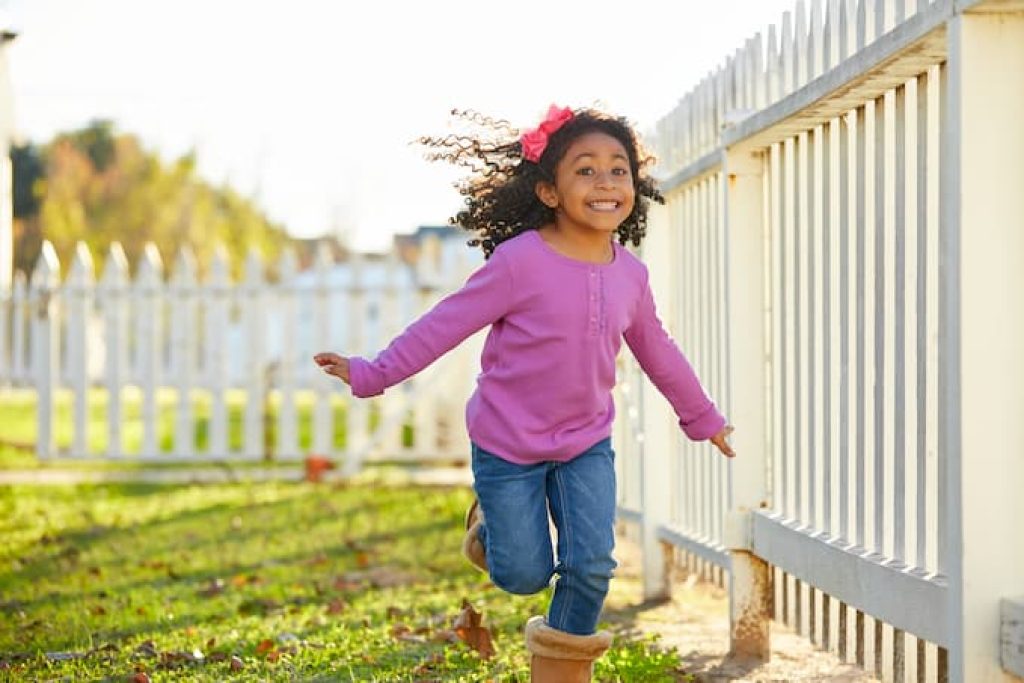
At 14 months, toddlers are full of energy and curiosity, making outdoor activities a great way to keep them engaged and entertained. Here are some fun and developmentally appropriate activities for 14-month-olds to enjoy outside:
Walking and Gross Motor Skills
How to play: Encourage your 14-month-old to practice walking by taking leisurely walks around the neighborhood, visiting a park, or playing in the backyard.
Why it’s good: Walking is a crucial developmental milestone that boosts gross motor skills and fosters self-confidence in toddlers.
Benefits: Develops gross motor skills, builds confidence, and encourages physical activity.
Sand and Water Play
How to play: Offer a sandbox or water table for sensory exploration. Your toddler can scoop, pour, and manipulate sand and water to their heart’s content.
Why it’s good: Sand and water play provide a tactile sensory experience that enhances fine motor skills and creativity.
Benefits: Promotes fine motor skills, sensory development, and imaginative play.
Play with a Ball and Bucket Transfer
How to play: Engage in ball games that involve throwing and catching to improve hand-eye coordination. Additionally, have your toddler transfer objects between buckets.
Why it’s good: These activities enhance hand-eye coordination and fine motor skills while making playtime enjoyable.
Benefits: Develop hand-eye coordination, fine motor skills, and spatial awareness.
Exploring the Garden
How to play: Let your toddler explore the garden, discovering colors, flowers, and soil. Encourage pulling toys like wagons or carts to develop gross motor skills and balance.
Why it’s good: Garden exploration fosters curiosity and teaches children about the natural world. Pulling toys enhances balance and coordination.
Benefits: Promotes curiosity, nature awareness, and gross motor skills.
Park and Grass Play
How to play: Visit a park where your toddler can crawl, climb, and run on the grass. Interact with other children to develop social skills.
Why it’s good: Park play enhances gross motor skills, balance, and social interaction.
Benefits: Develop gross motor skills, balance, and social skills.
Petting Animals
How to play: Encourage your toddler to interact with pets to develop empathy and social skills. Petting animals can be calming and enjoyable for both the child and the pet.
Why it’s good: Pet interactions teach empathy, nurture social skills, and provide a positive sensory experience.
Benefits: Enhances empathy, social development, and sensory awareness.
Hide and Seek
How to play: One person hides while the toddler counts. The toddler tries to find the hidden person, starting with simple hiding spots and gradually increasing complexity.
Why it’s good: Hide and seek fosters cognitive development (understanding object permanence), social skills (taking turns, cooperation), and gross motor skills (seeking and hiding).
Benefits: Promotes cognitive development, social skills, and gross motor skills.
Many fun and engaging outdoor activities for 14-month-olds can help them develop their physical, cognitive, and social skills. Parents and caregivers can help their toddlers thrive and grow by providing a safe and stimulating environment.
Boosting Creativity and Problem-Solving Skills
At 14 months old, children are at a crucial stage of development. They are curious and eager to explore the world around them. As a parent or caregiver, it is essential to provide them with opportunities to develop their creativity and problem-solving skills.
One way to boost creativity is by providing open-ended materials for children to play with. This allows them to use their imagination and come up with their ideas. Examples of open-ended materials include blocks, play dough, and art supplies.
Problem-solving skills can be developed by providing children with puzzles and other age-appropriate challenges. This helps them learn how to think critically and find solutions to problems. Simple wooden puzzles with large pieces are a good starting point for 14-month-olds.
Fine motor skills are also crucial for overall development. Activities such as finger painting, playing with clay, and using small manipulatives help children develop hand-eye coordination and dexterity.
Providing children with opportunities to explore and play in a safe and supportive environment is key to their development. By encouraging creativity, problem-solving, and fine motor skill development, parents and caregivers can help set children up for success in the future.
Promoting Independence in 14-Month-Old
At 14 months, children are starting to become more independent and self-aware. Parents can encourage independence by providing opportunities for their children to practice new skills and explore their environment.
One way to promote independence is by allowing the child to feed themselves. Parents can give the child a spoon and a bowl of food and let them try to eat independently. This will help develop fine motor skills and hand-eye coordination. It is important to remember that it may get messy, but it is a part of the learning process.
Another way to promote independence is by encouraging the children to dress themselves. Parents can provide easy clothing to put on and take off, such as pants with elastic waistbands and shirts with large armholes. This will help the child develop gross motor skills and a sense of accomplishment.
It is important to note that separation anxiety may still be present at this age. Parents can help ease separation anxiety by comforting objects, such as a favorite toy or blanket, and reassuring the child that they will return.
Promoting independence in 14-month-olds can help them develop essential skills and a sense of self. Parents should be patient and supportive as their child learns and grows.
Key Points Encourage self-feeding Provide easy-to-dress clothing Be mindful of separation anxiety Promote a sense of accomplishment
Fostering Bonding and Sensory Play
At 14 months old, children are full of energy and curiosity and love exploring the world around them. Fostering bonding and sensory play is a great way to engage with your child and help them develop their senses and motor skills.
Bonding with your child is essential for their emotional development. Spending quality time with your child can help build a strong relationship and create a sense of security for them. Sensory play activities are a great way to bond with your child and help them explore the world around them.
Finger painting is an excellent sensory play activity that allows children to explore different textures and colors. It is a fun and messy activity that kids love and can be done indoors and outdoors. All you need is some non-toxic finger paint, paper, and a space where your child can get creative.
Sensory activity can engage your child’s senses, such as touch, smell, and taste. You can create sensory bins filled with different materials like rice, beans, or sand. You can also add toys and objects your child can explore and manipulate.
It is essential to remember that every child is different and has a unique way of exploring and learning. As a parent or caregiver, providing a safe and engaging environment for your child to explore and learn at their own pace is crucial.
In conclusion, fostering bonding and sensory play is an excellent way to engage with your child and help them develop their senses and motor skills. Finger painting and sensory play activities are just a few examples of how you can engage with your child and their language skills and help them explore the world around them.
Understanding and Navigating Separation Anxiety

Separation anxiety is a common emotional stage that many babies go through. It typically starts around 8 months of age and peaks around 14-18 months. During this time, babies may become clingy, cry or become upset when separated from their parents or primary caregivers.
Understanding separation anxiety can help parents navigate this stage and support their child’s emotional development. It is important to remember that separation anxiety is a normal part of a child’s development and does not necessarily indicate a problem or a lack of love from the parents.
To help navigate separation anxiety, parents can try the following tips:
- Gradual separation: Start by leaving your child with a trusted caregiver for short periods of time and gradually increase the time as your child becomes more comfortable with separation.
- Consistency: Establish a consistent routine and stick to it as much as possible. This can help your child feel more secure and prepared for separation.
- Positive goodbye: Say goodbye to your child in a positive and reassuring manner. This can help your child feel more confident and secure during the separation.
- Comfort objects: Provide your child with a comfort object, such as a favorite toy or blanket, to help them feel more secure during separation.
- Reassurance: When you return, offer your child reassurance and comfort. This can help your child feel more secure and build trust in their relationship with their parents.
Parents need to be patient and understanding during this stage. Separation anxiety is a normal part of a child’s development and can be managed with patience, consistency, and reassurance. By understanding and navigating separation anxiety, parents can support their child’s emotional development and build a strong bond with their child.
Frequently Asked Questions
What should be taught to a 14-month-old?
At 14 months, children are at a stage where they are developing their gross and fine motor skills. They are also learning to communicate with others. It is essential to teach them basic skills such as walking, crawling, and grasping objects. You can also introduce them to simple words and phrases to help them learn how to communicate.
How do you entertain a 14-month-old throughout the day?
There are numerous activities that you can do with a 14-month-old to keep them entertained throughout the day. Some activities include reading books, playing with toys, singing songs, and dancing. You can also take them outside to explore nature, play in the park, or go for a walk.
What if a 14-month-old is not talking yet?
It is normal for children to start talking at different ages, and some may not start until they are closer to two years old. If a 14-month-old is not talking yet, there is no need to worry. However, it is still important to encourage them to communicate by talking to them, reading to them, and pointing out objects and sounds around them. If you have concerns about your child’s development, it is always best to consult with a pediatrician.
How many words should a 14-month-old say?
At 14 months old, language development varies from child to child, but many toddlers typically have a vocabulary of a few simple words or sounds. Some say 2-6 comments, while others say more or less. It’s essential to remember that language development is highly individual, and the focus should be on encouraging communication and language growth rather than a specific word count. Continue talking and reading to your child to support their language development.
When should I start potty training?
Potty training readiness varies among children, but most children show signs of readiness between 18 and 24 months. Signs of readiness include showing interest in the potty, staying dry for more extended, demonstrating physical willingness (like pulling down pants), and expressing discomfort with dirty diapers. However, it’s crucial to be patient and not rush the process. Some children may not be fully potty trained until closer to age 3. Show your child how to utilize a paper towel or toilet paper roll by cutting it into smaller rolls. Always follow your child’s cues and make the process a positive and gradual experience.
How many toys should a 14-month-old have?
There is no specific number of toys a 14-month-old should have. Quality matters more than quantity. Providing a variety of age-appropriate toys that encourage different types of play and learning is essential. Rotate toys regularly to keep them fresh and engaging. Additionally, consider your child’s interests and developmental needs when selecting toys. Simple toys that promote exploration, creativity, and development of fine or gross motor skills are often the best choices.
How much sleep does a 14-month-old need?
A 14-month-old typically needs around 11 to 14 hours of sleep in 24 hours. This includes both nighttime sleep and daytime naps. Most toddlers at this age will have a single rest during the day, usually lasting 1 to 2 hours. Nighttime sleep can range from 10 to 12 hours. However, every child is different, and individual sleep needs may vary. Ensure your child has a consistent sleep schedule and comfortable environment to support healthy sleep habits. Consult a pediatrician for guidance if you have concerns about your child’s sleep.



